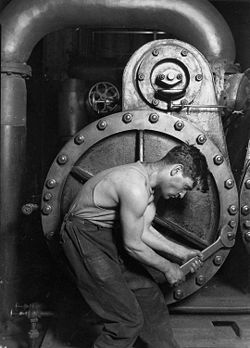This article needs additional citations for verification .(August 2024) |
 A mechanic at a steam pump in an electric power house, 1920, (from a photo study for the Works Progress Administration (WPA)). | |
| Occupation | |
|---|---|
Occupation type | Skilled trades |
Activity sectors | Repairing |
| Description | |
Education required | Apprenticeship |
Related jobs | Repairperson |
A mechanic is a skilled tradesperson who uses tools to build, maintain, or repair machinery, [1] especially engines. Formerly, the term meant any member of the handicraft trades, but by the early 20th century, it had come to mean one who works with machinery. [2]

